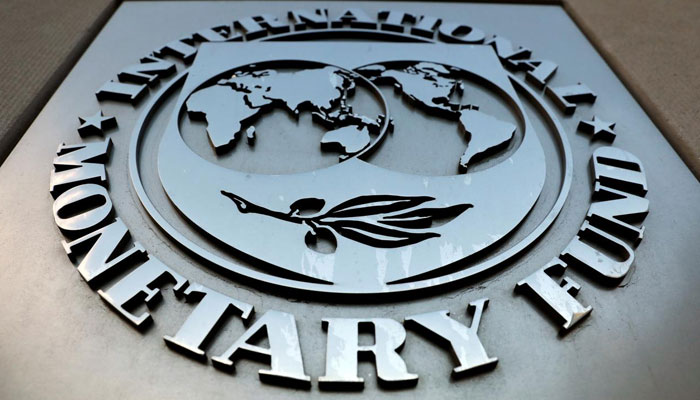Pension spending to hit alarming 10.9pc of GDP by 2050
ISLAMABAD: Alarms bells have begun to ring after the International Monetary Fund (IMF) has projected Pakistan’s Net Present Value (NPV) of pension spending to go up by a whopping 10.9 percent of GDP in the next 30 years till 2050. Whereas healthcare spending in Pakistan would witness an abysmal drop to 0.1 percent of GDP change from 2019 to 2030.
The Net Present Value (NPV) is the calculation used to find today’s value of a future stream of payments. It accounts for the time value of money and can be used to compare investment alternatives.
The pension bill had already ballooned and stands at Rs470 billion for the current fiscal 2020-21, equivalent to slightly over 1 percent of GDP. The pay and pension bills have come close and now the pension bill is all setto exceed the salary bill at federal levels. In totality, the pension bill at federal and provincial levels had crossed Rs 1 trillion mark and is set to exceed manifold in the years to come. The Government of Pakistan has decided to undertake crucial reforms in the pension sector that is becoming another monster on the fiscal side of the economy. “So it can be imagined that the change of 10.9 percent of GDP would have a far-reaching impact on the overall fiscal side of Pakistan’s economy in the future,” top official sources confirmed to The News here on Thursday.
According to IMF’s Fiscal Monitor, 2020 released on Thursday showing that Pakistan’s pension spending changed from 2019 to 2030 stood at 0.2 percent of GDP. But in NPV terms, the pension spending change in Pakistan is going to witness 10.9 percent of GDP from 2019-2050 over the next 30 years period. Alarmingly, the IMF has projected that there will be only 0.1 percent of GDP change in healthcare spending in Pakistan from 2019 to 2030. In Net Present Value, the healthcare spending change will witness 2.9 percent of GDP from 2019 to 2050.
Pakistan’s gross financing needs have been estimated at 36.9 percent of GDP during 2020 and the average term to maturity stood at 2.5 years. The debt to average maturity stood at 35.6 years. The overall balance on the fiscal side is projected at 5.1 percent of GDP in the next five years from 2020-25. And Pakistan’s deficit is estimated to have tightened for its fiscal year that ended in June 2020 as COVID-19 impacted only the fourth quarter and the capacity to scale up spending was limited. The pre-pandemic fiscal balance stood at 6.6 percent of GDP for Pakistan. The general government gross debt stood at 87.2 percent of GDP in fiscal year 2020 and it would be slightly decreased to 86 percent of GDP in fiscal year 2021.
The general government net debt stood at 79.1 percent of GDP in the current fiscal year against 79.9 percent in the last financial year. The IMF has projected that the net debt would be decreased to 64.9 percent by 2025.
-
 Princess Beatrice, Eugenie Resort To Begging Sarah Ferguson: 'It'll Bring Disaster For The Whole Family'
Princess Beatrice, Eugenie Resort To Begging Sarah Ferguson: 'It'll Bring Disaster For The Whole Family' -
 Jenny Slate Hails Blake Lively Amid Lawsuit Against Justin Baldoni
Jenny Slate Hails Blake Lively Amid Lawsuit Against Justin Baldoni -
 Sophie Wessex Shares 'frustration' From Early Days In Royal Family
Sophie Wessex Shares 'frustration' From Early Days In Royal Family -
 Jason Momoa's Aquaman Unseen Snap Revealed
Jason Momoa's Aquaman Unseen Snap Revealed -
 Prince Harry Taught Only Way King Charles 'will Take Him Seriously'
Prince Harry Taught Only Way King Charles 'will Take Him Seriously' -
 Meghan Markle’s Reaction To UK Talks With Prince Harry Comes To The Forefront: ‘Leaving Me?’
Meghan Markle’s Reaction To UK Talks With Prince Harry Comes To The Forefront: ‘Leaving Me?’ -
 Taylor Swift Slams Justin Baldoni In Explosive Text Messages, Court Filing Reveals
Taylor Swift Slams Justin Baldoni In Explosive Text Messages, Court Filing Reveals -
 Blake Lively’s Drops New Allegations Against Justin Boldoni About Birth Scene
Blake Lively’s Drops New Allegations Against Justin Boldoni About Birth Scene -
 Andrew's Reasons For Giving Sarah Ferguson A Rent-free Home For 30 Years After Divorce Finally Finds An Answer
Andrew's Reasons For Giving Sarah Ferguson A Rent-free Home For 30 Years After Divorce Finally Finds An Answer -
 Charlie Puth Reveals Wake-up Moment That Made Him Quit Alcohol
Charlie Puth Reveals Wake-up Moment That Made Him Quit Alcohol -
 Meghan Trainor Welcomes Baby Girl Mikey Moon Trainor And Turns Emotional
Meghan Trainor Welcomes Baby Girl Mikey Moon Trainor And Turns Emotional -
 Meghan Markle Would Not 'hide Away' From UK For Harry's Sake
Meghan Markle Would Not 'hide Away' From UK For Harry's Sake -
 Why Keith Urban's Daughters Are Avoiding His Rumored Girlfriend? Source
Why Keith Urban's Daughters Are Avoiding His Rumored Girlfriend? Source -
 Sarah Ferguson Led Andrew To Jeffrey Epstein: ‘She Wanted Him To Ask For More Money’
Sarah Ferguson Led Andrew To Jeffrey Epstein: ‘She Wanted Him To Ask For More Money’ -
 Blake Lively Claimed Justin Baldoni 'made A Monster' Of Her, Court Docs Reveal
Blake Lively Claimed Justin Baldoni 'made A Monster' Of Her, Court Docs Reveal -
 Prince William Accused Of 'harsh Decisions' Over Disgraced Royal
Prince William Accused Of 'harsh Decisions' Over Disgraced Royal




